Condensation in a Flat Roof
This customer in Ealing had a new flat roof and thought all his problems were over until he removed some of the pasteboard from the ceiling and saw this condensation on the underside of the new roof decking.
He contacted the roofer and they came back and placed a mushroom vent in the roof but still the problem persists.
He contacted us at London Flat Roofing and sent over these photos and asked our opinion. After some discussion we worked out that the new roof is around 40m2 and was replaced with new decking and three layers of mineral felt.
When the original roofer came back they only placed one or two vents in the roof and after some months the problem persists.
After some questioning it was established that the top floor flat was built-in 1960’s of solid wall construction and the condensation is mostly in the kitchen and bathroom area. It was also established that the flat always feels cold and that he gets lots of condensation on the windows.
London Flat Roofing’s Opinion
Part L 1b of the building regulation states that if you strip a roof you should update the thermal quality to the new specifications so realistically the roofer sound have informed the customer of this so its questionable if they have a responsibility to come back and do the roof again.
However the problem was probably there before they changed the roof realistically they haven’t changed any part of the thermal element of the roof just exchanged old roofing materials for new. To solve the problem now we need to work out our options.
To add mushroom vents to the roof would mean adding a vent at both ends of each cavity between the joists so through ventilation could be achieved. This only address the ventilation and not the thermal element of the roof also this is going to be mess and expensive as probably 40 or so vents would have to be used.
Another way would be to introduce strip vents to the sides of the roof, probably cheaper but again doesn’t address the thermal properties of the roof.
We can upgrade the insulation of the roof in one of two ways:
- Form a cold roof and place the insertion under and between the joists.
- Form a warm roof and place the insertion over the new roof using the old roof as the vapour barrier.
The warm flat roof construction above will be much more cost-effective and won’t impact the living space below as the ceiling won’t need dropping to add the roof insulation.
The warm flat roof will solve the problem of condensation on the bottom of the roof decking however it will still be worth reducing the amount of humidity in the rooms below as this will improve the living conditions.

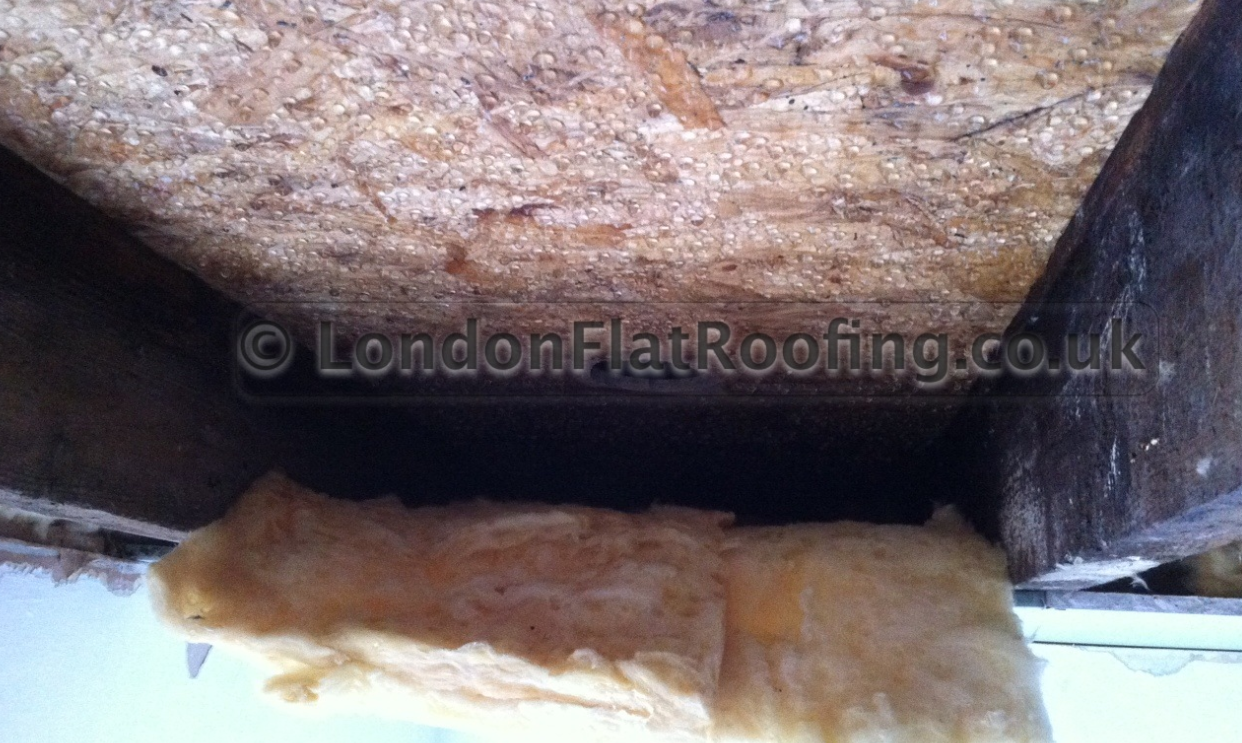
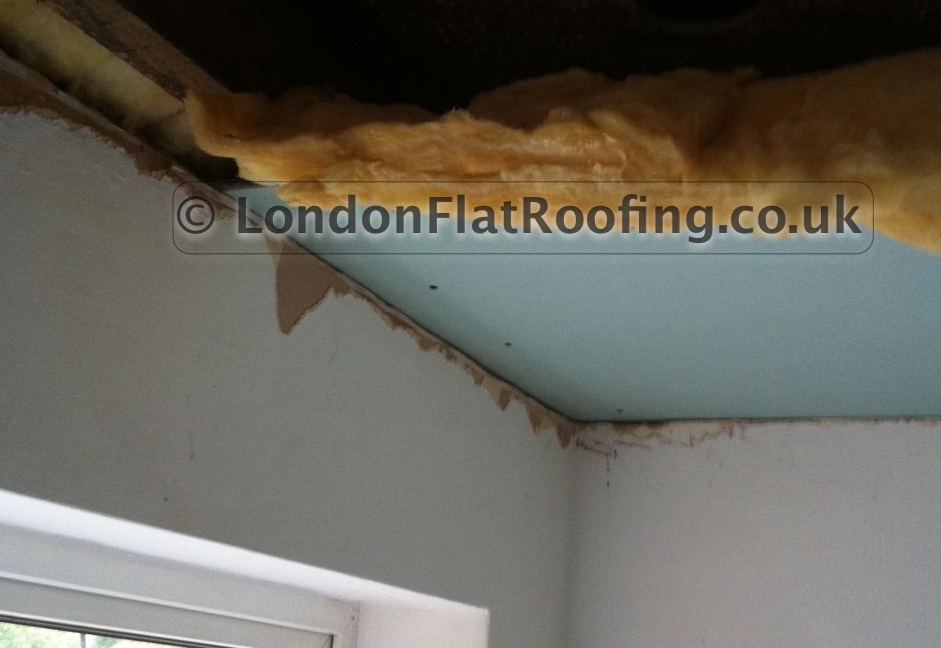
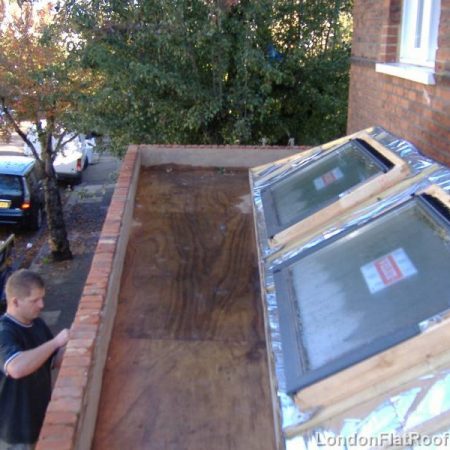
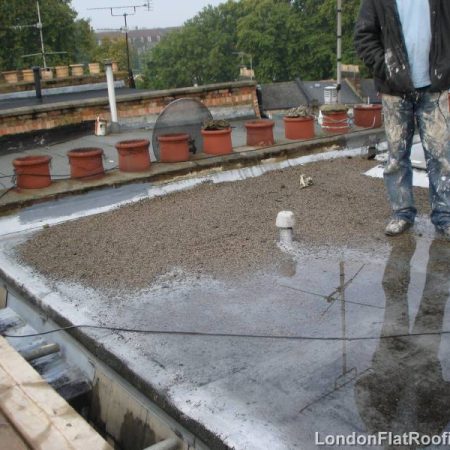


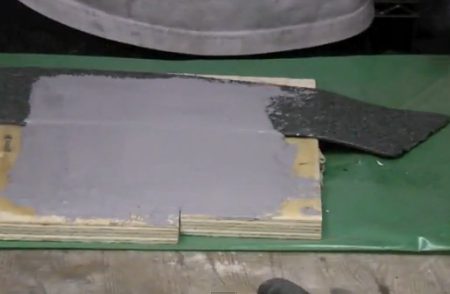
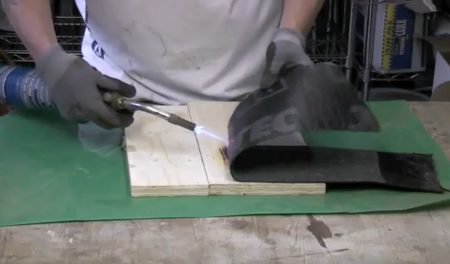
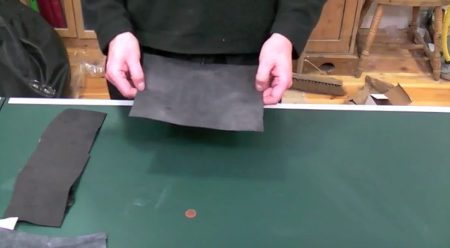
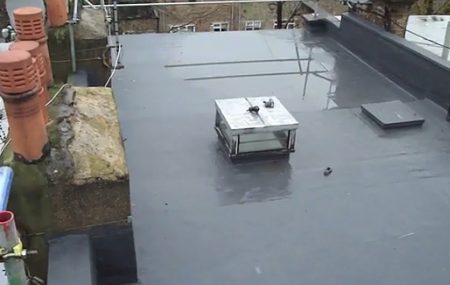

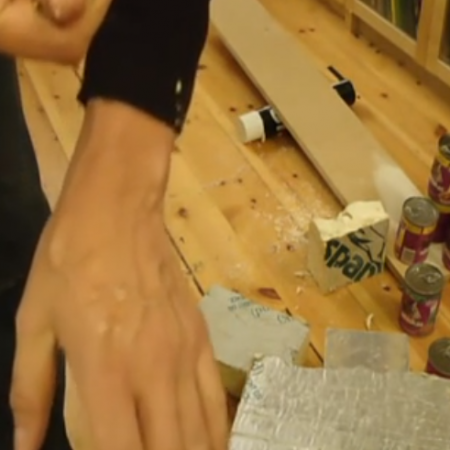
Comments (13)
Hi Steve,
thanks for the video which is simple yet very helpful.
Do you have more videos to show if you have to install vents from the extractor fans or presence of soil pipe running down from first floor, skylight etc?
How would you address the thermal bridge etc.
Kind Regards,
Vitesh
No, I haven’t got any videos on this subject, you have to make sure that any vent or protrusion is insulated so that it doesn’t sweat.
Hello, having a newly constructed single story extension with a timber/lantern (cold) flat roof to be completed soon. The building inspector has recommended a wall abutment and one mushroom vent. Can’t understand just one mushroom ventilator if an abutment is being inserted too? Also will the rubber roof which has been laid be compromised with the cutting out for the mushroom vent? Hope you can help? Thank you.
Adding an abutment vent one end means that you must add the same amount of ventilation the other end otherwise it won’t work and condensation in the roof may build up if all conditions prevail. Cutting a mushroom thing or anything into and EPDM rubber roof is easy and can easily be repaired so you don’t have a problem with that, unfortunately the building control inspectors don’t always understand what they are doing and what they are saying, but the reason we call ventilation through ventilation is because you need to have movement of air through the vented cavity. I should say carrot is every cavity should be vented with ventilation inlet at both ends, the ventilation is only equal to the smallest opening so if you have a vent in one end that has an opening that is 100 mm² and you have a vent the other end that is 1 mm² guess what how much movement you will get of air moving through this yes it’s 1 mm. Hopefully that answers your question. Thanks, Steve
Hi, I have an en suite bathroom with ceiling mounted extraction fan. This vents into a vertical mushroom vent. The construction of the ensuite is recent and is up to building regs with over 300mm of insulation in the roof space before the pipe rises above the roof. The external rise is approx 450mm. Unfortunately, condensation is coming back down the pipe and shorting the extraction fan. My question would be how do I prevent this? Could I insert a condensation trap above the roofline and / or insert a shutter vent inside the pipe?
Hi, not quite sure exactly what you are talking about here, however yes it’s not uncommon to put in a trap in a extractor pipe with a overflow pipe to the outside to take away condensation that may happen inside that pipe
Hi Ian I’m on a flat roof at the moment it has been over boarded insolated with upto 160ml insolation we have cut about 6 1msq patches out and the roof is soaking between the old roof and the new the insolation isn’t wet at All I’ve said it needs venting as I think it is condensation due to the cold spot between the the old and new roof I’ve installed 1p roof vents do u think this will solve the roof leak issue as I do because the roof is soaked all over so I carnt see it being a roof leak but my company are telling me it is but I’m convinced it’s condensation as the water dose not cine in for 3 days after a very heavy rain fall but the roof has been on for 4 years so all that condensation will cause so much water under the the new roof as there are air con pipes and a boiler flu so the heat is emense plus the heat rising from the building as its a school and the heating will be on constant am I right in thinking it is condensation
Hi
Firstly the quality of your videos is very very high and the models used are amazing.
Problem flat cold roof. Due to condensation after a tradishional felt flat roof was replaced by a “fibreglass” roof ( fibre glass over 18mm osb )
The internal ceiling was taken down and joists infilled with 4″ of celotex, and plaster board replaced with “thick ” insulated moisture membrane board lowering the ceiling by an inch or more. The outer sofit board was cut to take 4″ vent discs.
That appeared do the trick but, this winter the bedroom ceiling was “damp” for a few days leaving a brown stain across a distaance of 18″ or so. It is difficult to “see” into the joisted area but a comera “poor quality” determind that the outer areas between the joists were wet “dark areas on osb and tops to the joists. As the temperature increasd towards March, as second camera trip showed no “black patches.
I am considering, laying 100mm of Kingspan directlt over the fibre glass top covering and topping that with 18mm osb and then covering that with one of the new “rubberoid” coverings. I think in this case the ventilation holes should be filled in. I note from some information given on your site that the outer ends at the sofit may cause a thermal break? Would trying to back fill with expanding foam be a good idea? Generally, I would appreciate your feedback on this situaion? I don’t see away to pictures to illustrate the condition but I can send some if needed. Many thanks
Hi Steve …… It looks like you are the best, but can you help solve this one ? (my roofer doubts anyone can !)
In a nutshell, I have an 18 month old self built, green oak framed house in Surrey with a full 172mm SIPs encapsulation system (including the roof) – Due to height issues we could not go to a full height apex ridge, so it was designed with a flat roof with a false clay tile ridge to look conventional from the road.
The flat roof area is approximately 15m x 4m. The idea was to fibreglass over the SIPs panel flat roof and that was it …. Simple. Then we went wrong and decided to have a Sun Pipe to get some light into the inner stairwell that led up to the room in the roofspace. Everything was fine when it rained until we hit the colder months. Then one night after 3 days of continuous rain we woke up to a 3am shower coming in all around the light pipe and the ceiling staining out from it. –
The roof configuration is vapour barrier on the SIPs roof, then soft wood firings across the Sips roof to create a slope. Then 18mm boards with fibreglass over this (thereby creating a small void between the top of the SIPs panel and the underside of the boards which the fibreglass is affixed too… …….. and a Sun pipe collar through all of this !!
We thought we had solved the issue when the roofer inserted two 2″ ventilation pipes (like a shepherds crook) around the perspex dome, but this recent storm caused the same result ……. leaking / stains everywhere, but drips, not a shower ?
He has now replaced the ventilation pipes with two 4″ mushroom vents.
We now wait with dread and are scared to leave the house in bad weather.
Can you help Steve ? Is it condensation ? ………….. Would ripping the whole thing out and filling back in with a piece of SIPs panel work ?
The roofer is adamant that we do NOT have a leak.
Well you’re going to have to send me some photos in some drawings to get on top of this. However, the minute you say that you have or possibly have condensation and you have a Sipps panelled roof and it’s covered with GRP. Then I start to worry. Six panels are great in theory, but you try fixing them without any Thermal breaks in between the pens it’s near on impossible. This leads to a microclimate of movement of air inside the petals that eventually leads to rotting at the high point. The condensation basically tends to follow the gaps and as we know warm air rises and that’s where we see the problems, the fact that you’ve had a pipe put through should really make no difference and what you are properly suffering is condensation from around the pipe because the pipe is not firmly insulated. However, you keep mentioning that it keeps raining and if it keeps raining and the problem only happens then then you’ve Gotta look at it has been a roof leak so you have to keep monitoring this. Obviously, you won’t get condensation in the warmer months so as the year goes through just keep notes on when the problem happens because it certainly won’t be condensation in the roof in March, April May, June July and so on
Hi. I had a flat roof replaced in April this year on a 15 year old loft conversion. They replaced the boards and felt. I’ve now got condensation spots appearing all over. What have the roofers done wrong to cause this. Thanks
Condensation in a cold roof in the conditions that we’ve just had is not uncommon. You’re always going to get condensation in a roof when the external relative humidity is high if it stays high for several days, that builds up and just like the cold snap, we just heard the structure itself is cold, the moisture inside is heavy and unladen and wants to condense on the cold surface so it’s always gonna happen. What you need to be looking for is is there mould starting to form? If mould starts to form then you have a problem it’s basically been wet for too long. Unfortunately, this is one of the problems with cold roof construction. Warm roof construction is definitely the way to go. The building regulations say do not use cold roof construction unless you really have to. Hope this helps Steve.
Hello , I have a detached four hipped pitched roof and tiled with a flat roof on top .I have over fascia vents 20 low level tile vents 14 high level tile vents of which I have sealed off the high level ones . I have installed 12 mushroom vents on the 8 mx4 m flat roof area and I still have condensation on the roof deck below . The loft is cold but I t doesn’t feel like the air is blowing around .can you help with the condensation issue . It starts from December and goes onto mid February .would it help if I made the whole roof including the pitched roof a warm roof .I would be grateful for an6 advise please thanks Peter